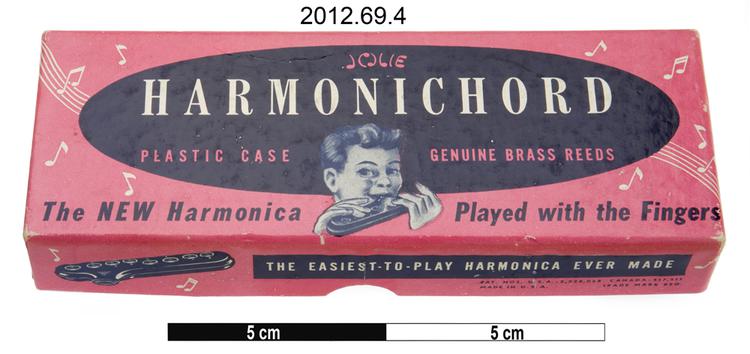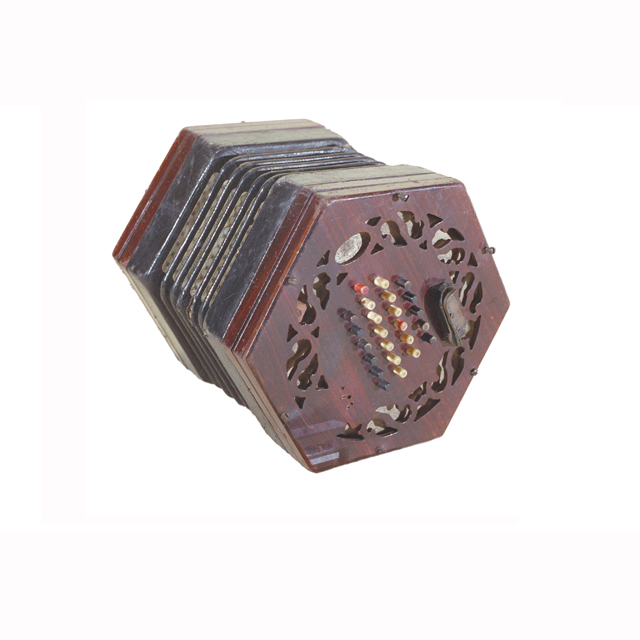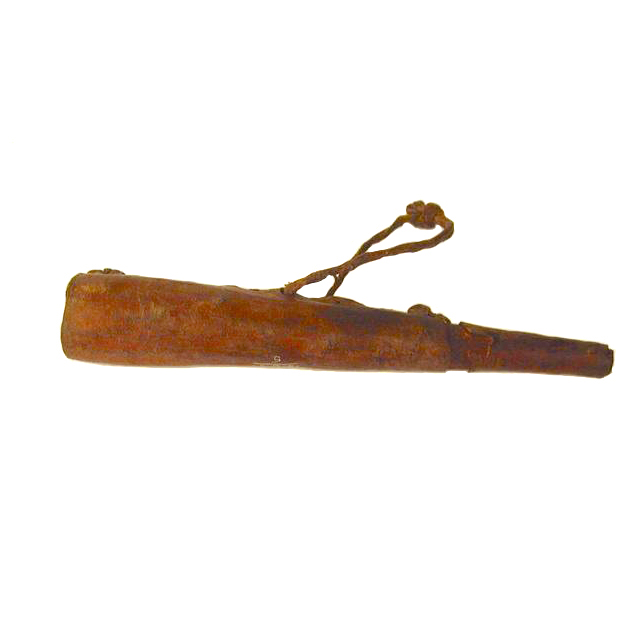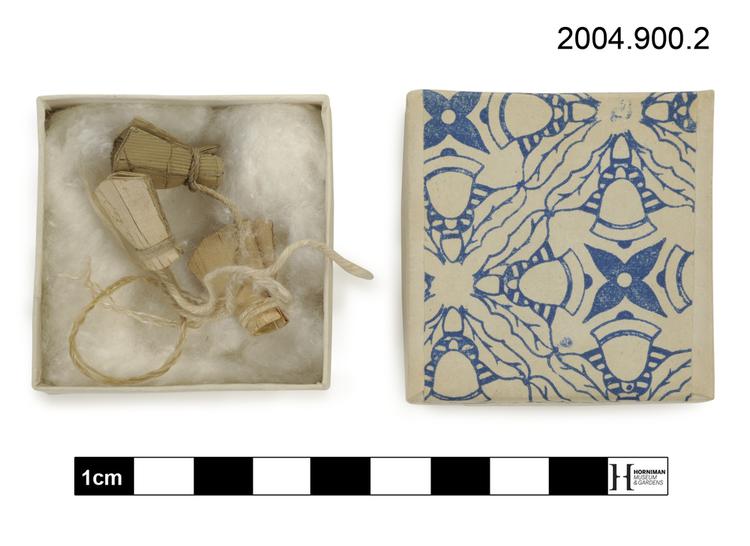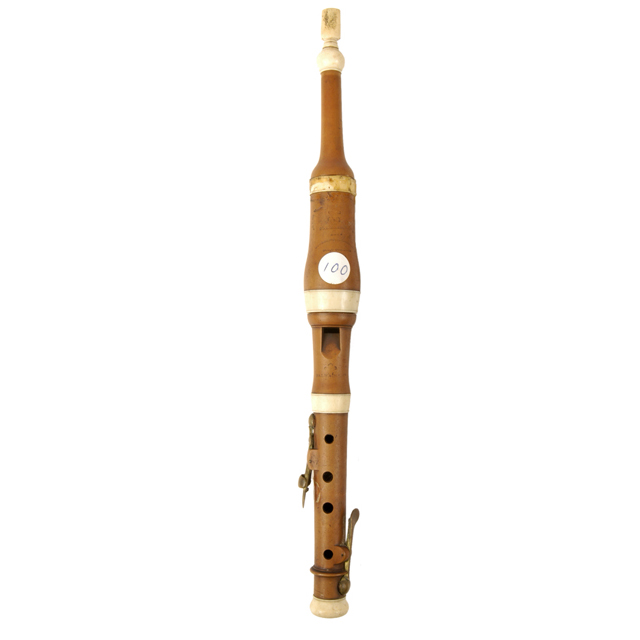
French flageolet in G (high pitch). Boxwood. Four block mounted brass domed keys with leather pads. Five ferrules and mouthpiece, all in ivory. String lapped tenons. Six tone holes, including two thumb holes, one positioned higher than the first finger hole, and the other between the lowest two finger holes. Sponge chamber is stamped: D'ALMAINE & Co./DATE/GOULDING & D'ALMAINE/SOHO SQUARE/LONDON; with floral decorations. Upper joint is stamped: D'ALMAINE & Co.; with an emblem of three feathers above.
overall: 14.252 x 1.2598 x 1.2598 in.; 362 x 32 x 32 mm;
Comments by Douglas MacMillan following examination on 16.6.11: Type: French flageolet à pompe, length: 338/163, Materials: boxwood with ivory mounts and brass keys. Pieces: 4, Holes: 4+2, Keys: Mounted in wooden blocks - a#, d#, two interlocking trill keys R side (for R1) opening on pipe: brass: domed key flaps, Stamped on sponge chamber: on sc: (Prince of Wales feathers) / D’ALMAINE & CO (in cartouche) / LATE / GOULDING & D’ALMAINE / SOHO SQUARE / LONDON; on head: (Prince of Wales feathers) / D’ALMAINE & CO; comments: firm established 1834, in business until 1867: the instrument must date from p1834 (see Waterhouse p80)
overall: 14.252 x 1.2598 x 1.2598 in.; 362 x 32 x 32 mm;
The flageolet is a duct flute that is classified according to the system of Hornbostel and Sachs as an 'open flute with internal duct, with fingerholes and keys'.



